The Importance of Renewable Energy Sources in Poland’s Energy Mix
Abstract
:1. Introduction
2. Materials and Methods
3. Results and Discussion
3.1. Concept and Types of Energy: Classification of Energy
3.1.1. Non-Renewable Energy
- Of all non-renewable energy sources worldwide, coal reserves are the largest
- No hazard related to transport, storage, and use
- Low price
- Combustion generates a great deal of energy and heat
- Emission of carbon dioxide into the atmosphere during power generation
- Limited reserves
- Negative impact on the natural environment (e.g., acid rains)
- Degradation of landscape
- Emission of dust [31]
- High efficiency
- Short construction time of power plants
- Versatility
- Low price
- Ease of transport [33]
- Risk of failure or leakage during extraction or transport
- Emission of hazardous compounds into the atmosphere during combustion
- High cost of power generation
- Dependency on petroleum exporters
- Direct exploitation of deposits
- Convenient distribution through pipelines
- Easy storage [34]
- Low failure rate of power plants
- Low emission of pollutants
- Low consumption of fuel
- High concentration of power
- Long operating life (provision of a large number of jobs)
- Radiation risk
- High cost of safety measures
- High cost of storage of radioactive waste
- Public concern [34]
- Relatively low cost of power generation
- Technological competence
- High volume and power per unit of mass
- Accessibility of energy resources
- Air pollution due to exhaust emissions into the atmosphere
- Global contamination risk of nuclear power plant failures
- Exhaustion of fossil fuels
- Problems with waste storage (mostly radioactive)
- Irreversible changes to landscape [26]
3.1.2. Renewable Energy
- Cascading
- Small reservoir stations
- Impoundment facilities with large reservoir
- Diversion stations with no reservoir
- Pumped storage stations [26]
- Photovoltaic—electric
- Photothermal—thermal
- Photobiochemical—chemical bonds
- Wide availability of the energy source
- No cost of power consumption (after return on investment)
- Environmentally friendly (no emissions of harmful substances)
- No impact on earth’s energy balance (does not exhaust itself)
- High cost of installation
- Seasonality (the generated power depends on the weather conditions, time of day, and season)
- Problems with storing the energy
- Requires a large area for installation [26]
- Solid, e.g., wood
- Gaseous, e.g., biogas
- Liquid, e.g., bio-oil [45]
- Economic activation of rural communities
- Creating additional jobs
- Constant access to sources and media of energy
- Use of the overproduced food
- Use of the generated waste
- Developing wastelands
- Increase in energy security
- Risk of decreasing the biodiversity of crops
- Increase in atmospheric pollution from biomass combustion
- Toxic and carcinogenic emissions from pesticide-contaminated biomass combustion
- Smaller power generation capacity in comparison to fossil fuels
- Seasonality of some plants [26]
3.2. Prospects for Development of Renewable Energy Sources in Poland
- Increasing energy security
- Increasing economic effectiveness
- Reducing negative impacts on the environment
- Limiting CO2 emissions
- Expanding the financing of RES, which will lead to its development and creation of new jobs [13]
- Electrical power engineering
- Transport
- Heating and cooling
- Offshore wind energy (new wind farms of projected capacity up to 14 GW)
- Production of energy for own needs:
- Energy clusters (dealing with the local energy security and independence)
- Energy cooperatives (producing energy for own needs and selling the surplus on to the national system, e.g., “New Energy”)
- Prosumers (producers and consumers in one person) [13]
3.3. Renewable Energy Sources in Light of Own Research
3.3.1. Characteristics of Respondents
3.3.2. State of Knowledge of the Renewable Energy Sources Dents
3.3.3. Analysis of the Energy Mix
4. Conclusions
Author Contributions
Funding
Conflicts of Interest
References
- Chen, W.-H.; Budzianowski, W.; Lee, K.T. Preface—Sustainable Biofuels. Energy Convers. Manag. 2017, 141, 1. [Google Scholar] [CrossRef]
- Bhaskar, T.; Bhavya, B.; Singh, R.; Naik, D.V.; Kumar, A.; Goyal, H.B. Thermochemical conversion of biomass to biofuels. In Biofuels—Alternative Feedstocks and Conversion Processes; Pandey, A., Larroche, C., Ricke, S.C., Dussap, C.G., Gnansounou, E., Eds.; Academic Press: Oxford, UK, 2011; pp. 51–77. [Google Scholar] [CrossRef]
- Rosales-Calderon, O.; Arantes, V. A review on commercial scale high value products that can be produced alongside cellulosic ethanol. Biotechnol. Biofuels 2019, 12, 240. [Google Scholar] [CrossRef] [Green Version]
- Kościółek, M.; Ziółko, M. Udział energii odnawialnej w bilansie energetycznym województwa podkarpackiego (The share of renewable energy in the energy balance of the Podkarpackie Voivodeship). Humanit. Soc. Sci. 2015, 22, 79–89. [Google Scholar]
- Escobar, J.A.; Lora, E.E.; Venturini, O.J.; Yánez, E.; Castillo, E.F.; Almazán, O. Biofuels: Environment, technology and food security. Renew. Sustain. Energy Rev. 2009, 13, 1275–1287. [Google Scholar] [CrossRef]
- Piwowar, A.; Dzikuś, M. Development of Renewable Energy Sources in the Context of Threats Resulting from Low-Altitude Emissions in Rural Areas in Poland: A Review. Energies 2019, 12, 3558. [Google Scholar] [CrossRef] [Green Version]
- Zawalińska, K.; Kinnunen, J.; Gradziuk, P.; Celińska-Janowicz, D. To Whom Should We Grant a Power Plant? Economic Effects of Investment in Nuclear Energy in Poland. Energies 2020, 13, 2687. [Google Scholar] [CrossRef]
- Zhai, R.; Hu, J.; Saddler, J.N. What are the major components in steam pretreated lignocellulosic biomass that inhibit the efficacy of cellulose enzyme mixtures? ACS Sustain. Chem. Eng. 2016, 4, 3429–3436. [Google Scholar] [CrossRef]
- Jefferson, M. Sustainable energy development: Performance and prospects. Renew. Energy 2006, 31, 571–582. [Google Scholar] [CrossRef]
- Wyman, C.E.; Dale, B.E. Producing Biofuels via the Sugar Platform. Chem. Eng. Prog. 2015, 111, 45–57. Available online: https://www.researchgate.net/profile/Bruce_Dale/publication/283872696_Producing_biofuels_via_the_sugar_platform/links/57504a0a08aefe968db72891/Producing-biofuels-via-the-sugar-platform.pdf (accessed on 7 July 2020).
- Ang, B.W.; Choon, W.L.; Ng, T.S. Energy security: Definitions, dimensions and indexes. Renew. Sustain. Energy Rev. 2015, 42, 1077–1093. [Google Scholar] [CrossRef]
- Winzer, C. Conceptualizing energy security. Energy Policy 2012, 46, 36–48. [Google Scholar] [CrossRef] [Green Version]
- Ogarek, P. Przyszłość odnawialnych źródeł energii w Polsce w oparciu o Politykę energetyczną Polski do 2040 roku (The future of renewable energy sources in Poland based on Poland’s Energy Policy until 2040). In Bezpieczeństwo Energetyczne Polski i Europy Uwarunkowania—Wyzwania—Innowacje; Ruszel, M., Podmiotko, S., Eds.; Instytut Polityki Energetycznej im. I. Łukasiewicza: Rzeszów, Poland, 2019; pp. 98–119. Available online: https://www.instytutpe.pl/wp-content/uploads/2019/10/Bezpiecze%C5%84stwo-energetyczne-Polski-i-Europy-.pdf (accessed on 9 July 2020). (In Polish)
- Adamczak, K. Energia odnawialna a bezpieczeństwo Polaków (Renewable energy and the security of Poles). Securitologia 2016, 2, 51–61. [Google Scholar]
- Instytut Energetyki Odnawialnej. Rynek Fotowoltaiki w Polsce (Market of Fotovoltaic in Poland); Instytut Energetyki Odnawialnej: Warsaw, Poland, 2020. (In Polish) [Google Scholar]
- Bódis, K.; Kougias, I.; Jäger-Waldau, A.; Taylor, N.; Szabó, S. A high-resolution geospatial assessment of the rooftop solar photovoltaic potential in the European Union. Renew. Sustain. Energy Rev. 2019, 114, 109309. [Google Scholar] [CrossRef]
- Mundo-Hernández, J.; de Celis Alonso, B.; Hernández-Álvarez, J.; de Celis-Carrillo, B. An overview of solar photovoltaic energy in Mexico and Germany. Renew. Sustain. Energy Rev. 2014, 31, 639–649. [Google Scholar] [CrossRef]
- Sliz-Szkliniarz, B.; Eberbach, J.; Hoffmann, B.; Fortin, M. Assessing the cost of onshore wind development scenarios: Modelling of spatial and temporal distribution of wind power for the case of Poland. Renew. Sustain. Energy Rev. 2019, 109, 514–531. [Google Scholar] [CrossRef]
- Gnatowska, R.; Moryń-Kucharczyk, E. Current status of wind energy policy in Poland. Renew. Energy 2020, 135, 232–237. [Google Scholar] [CrossRef]
- Hajto, M.; Cichocki, Z.; Bidłasik, M.; Borzyszkowski, J.; Kuśmierz, A. Constraints on Development of Wind Energy in Poland due to Environmental Objectives. Is There Space in Poland for Wind Farm Siting? Environ. Manag. 2019, 59, 204–217. [Google Scholar] [CrossRef] [Green Version]
- Wielewska, I. Rozwój OZE na obszarach wiejskich i ich wpływ na środowisko przyrodnicze w opinii doradców rolnych (The development of RES in rural areas and their impact on the natural environment, in the opinions of agricultural advisors). Problemy Rolnictwa Światowego 2014, 14, 186–195. [Google Scholar]
- Przybylska-Cząstkiewicz, M. Prawne uwarunkowania rozwoju energetyki odnawialnej w Polsce po 2015 r. (Legal conditions for the development of renewable energy in Poland after 2015). Polityka Energetyczna Energy Policy J. 2017, 20, 103–116. [Google Scholar]
- Marks-Bielska, R.; Bielski, S.; Novikova, A.; Romaneckas, K. Straw Stocks as a Source of Renewable Energy. A Case Study of a District in Poland. Sustainability 2019, 11, 4714. [Google Scholar] [CrossRef] [Green Version]
- Jankowski, K.J.; Sokólski, M.M.; Dubis, B.; Załuski, D.; Szempliński, W. Sweet sorghum—Biomass production and energy balance at different levels of agricultural inputs. A six-year field experiment in north-eastern Poland. Eur. J. Agron. 2020, 119, 126119. [Google Scholar] [CrossRef]
- Schallenberg Rodríguez, J.C.; Piernavieja Izquierdo, G.; Hernández Rodríguez, C.; Unamunzaga Falcón, P.; García Déniz, R.; Díaz Torres, M.; Cabrera Pérez, D.; Martel Rodríguez, G.; Pardilla Fariña, J.; Subiela Ortin, V. Energías Renovables y Eficiencia Energética; Instituto Tecnológico de Canarias, S.A.: Santa Cruz, Spain, 2008; Available online: https://www.cienciacanaria.es/files/Libro-de-energias-renovables-y-eficiencia-energetica.pdf (accessed on 9 July 2020).
- Lewandowski, W. Proekologiczne Odnawialne Źródła Energii (Pro-Ecological Renewable Energy Sources); WNT: Warszawa, Poland, 2014. (In Polish) [Google Scholar]
- Hodana, M.; Holtzer, G.; Kalandyk, K.; Szymańska, A.; Szymański, B.; Żymankowska-Kumon, S. Odnawialne Źródła Energii. Poradnik (Renewable Energy Sources. Guide); HELIOS: Kraków, Poland, 2012; Available online: http://home.agh.edu.pl/~szk/files/docs/OZE_poradnik.pdf (accessed on 9 July 2020). (In Polish)
- Villanueva Rodríguez, T. El Carbón. Junta de Castilla y León, UMINSA, M.S.P., S.A. HVL, Grupo Viloria, APEMA, UEE. 2009. Available online: https://www.siemcalsa.com/images/pdf/El%20Carbon.pdf?fbclid=IwAR2BemdGhi3LbAvaBF5xc4BVfFUQE8eWbI54j_Ojpk4YDbMirb8yvNZjG4M (accessed on 14 July 2020).
- Wilczyński, M. Zmierzch Węgla Kamiennego w Polsce (Twilight of Hard Coal in Poland); Fundacja Instytut Na rzecz Ekorozwoju: Warszawa, Poland, 2013; Available online: file:///C:/Users/UWM/AppData/Local/Temp/ESP%20nr%2006_2017_04.pdf (accessed on 9 July 2020). (In Polish)
- Kasztelewicz, Z.; Tajduś, A.; Słomka, T. Węgiel brunatny to paliwo przyszłości czy przeszłości? (Lignite is the fuel of the future or the past?). Napędy i Sterowanie 2017, 19, 88–104. [Google Scholar]
- Dubiński, J.; Turek, M.; Aleksa, H. Węgiel kamienny dla energetyki zawodowej w aspekcie wymogów ekologicznych [Energy security in national and EU legal regulations]. Górnictwo i Środowisko 2005, 2, 5–21. [Google Scholar]
- Kaliski, M.; Nagy, S.; Rychlicki, S.; Siemek, J.; Szurlej, A. Gaz ziemny w Polsce—Wydobycie, zużycie do 2030 roku (Natural gas in Poland—Extraction, consumption by 2030). Górnictwo i Geologia 2010, 5, 27–40. Available online: https://www.polsl.pl/Wydzialy/RG/Wydawnictwa/Documents/kwartal/5_3_2.pdf (accessed on 9 July 2020). (In Polish).
- Wilczyński, M. Gaz Ziemny Wsparciem dla Niskoemisyjnej Gospodarki (Natural Gas Supports Low-Carbon Economy); Instytut na rzecz Ekorozwoju: Warszawa, Poland, 2015; Available online: https://www.teraz-srodowisko.pl/media/pdf/aktualnosci/1585-gaz-ziemny-wsparcie-niskoemisyjnej-gospodarki.pdf (accessed on 9 July 2020). (In Polish)
- Kiełbasa, W.; Szyszka, R.; Bonisławski, W.; Kołodziej, W. Podstawy Energetyki Jądrowej (Basics of Nuclear Power); Hydroenergo: Wejherowo, Poland, 2012; Available online: http://static.scholaris.pl/main-file/107/311/podstawy_energetyki_jadrowej_67730.pdf (accessed on 9 July 2020). (In Polish)
- Gędek, S.; Ruszel, M. Ocena bezpieczeństwa ekonomicznego polskiego sektora ropy naftowej—Stan i perspektywy (Assessment of the economic security of the Polish oil sector—Condition and prospects). Zeszyt Naukowy Instytutu Gospodarki Surowcami Mineralnymi i Energią Polskiej Akademii Nauk 2016, 95, 265–274. [Google Scholar]
- Departament Energii Jądrowej Ministerstwa Energii. Wydobycie i Produkcja Uranu. Program Jądrowy na Ukrainie (Uranium Mining and Production. Nuclear Program in Ukraine); Departament Energii Jądrowej Ministerstwa Energii: Ukraina, Program Polskiej Energetyki Jądrowej Analizy i Opracowania; 2016; Available online: file:///C:/Users/UWM/AppData/Local/Temp/5_Uran_Ukraina-3.pdf (accessed on 9 July 2020). (In Polish)
- Berent-Kowalska, G.; Kacprowska, J.; Moskal, I.; Piwko, D.; Jurgaś, A.; Kacperczyk, G. Energia ze Źródeł Odnawialnych 2016 r. (Renewable Energy 2016); Główny Urząd Statystyczny: Warszawa, Poland, 2017; Available online: https://stat.gov.pl/files/gfx/portalinformacyjny/pl/defaultaktualnosci/5485/3/11/1/energia_ze_zrodel_odnawialnych_2016.pdf (accessed on 9 July 2020). (In Polish)
- Maśloch, G. Uwarunkowania i Kierunki Rozwoju Energetyki Odnawialnej w Polsce (Conditions and Directions of Development of Renewable Energy in Poland); Szkoła Główna Handlowa: Warszawa, Poland, 2018. (In Polish) [Google Scholar]
- Tokarz, J.; Hryckiewicz, L. Elektrownia Wodna Żarnowiec—Historia i dzień dzisiejszy (Żarnowiec Hydroelectric Power Plant—History and today). Energetyka 2003, 8, 509–515. Available online: http://elektroenergetyka.pl/upload/file/2003/8/elektroenergetyka_nr_03_08_1.pdf (accessed on 9 July 2020). (In Polish).
- Niechciał, J. Energetyka wodna—Jak wpływa na środowisko? (Hydropower—How does it affect the environment?). Wszechświat 2014, 115, 209–211. [Google Scholar]
- Krzemień, Z. Wykorzystanie energii fal morskich do produkcji energii elektrycznej (Sea wave energy using for electrical energy production). Pr. Inst. Elektron. 2013, 262, 120–131. [Google Scholar]
- Kiernicki, J.; Bałuka, G. Energia wiatru jako szczególne źródło energii odnawialnej (Wind energy as a special source of renewable energy). Energetyka 2009. Available online: https://www.cire.pl/pliki/2/eowbaluka.pdf (accessed on 9 July 2020). (In Polish).
- Mularczyk, A.; Hysa, B. Rozwój i perspektywy energii solarnej w Polsce i województwie śląskim (Development and perspectives of solar energy in Poland and the Śląskie Voivodeship). Zeszyt Naukowy Politechniki Śląskiej Organizacja i Zarządzanie 2015, 86, 363–377. [Google Scholar]
- Ustawa z Dnia 7 Czerwca 2018 r. o Zmianie Ustawy o Odnawialnych Źródłach Energii Oraz Niektórych Innych Ustaw (Act of 7 June 2018 Amending the Act on Renewable Energy Sources and Some Other Acts) (Dz.U. z 2018, Poz. 1276). Available online: https://isap.sejm.gov.pl/isap.nsf/download.xsp/WDU20160000831/T/D20160831L.pdf (accessed on 9 July 2020). (In Polish)
- Mirowski, T.; Mokrzycki, E.; Uliasz-Bocheńczyk, A. Energetyczne Wykorzystanie Biomasy (Energetic Use of Biomass); IGSMiE PAN: Kraków, Poland, 2018. (In Polish) [Google Scholar]
- Sala, K. Przemysłowe wykorzystanie energii geotermalnej w Polsce na przykładzie geotermalnego zakładu ciepłowniczego w Bańskiej Niżnej (Industrial use of geothermal energy in Poland on the example of a geothermal heating plant in Bańska Niżna). Prace Komisji Geografii Przemysłu Polskiego Towarzystwa Geograficznego 2018, 32, 74–82. [Google Scholar]
- Graczyk, A. Rozwój odnawialnych źródeł energii w polskiej polityce regionalnej. (Development of renewable energy sources in Polish regional policy). Barometr Regionalny 2017, 15, 4–59. Available online: http://br.wszia.edu.pl/zeszyty/pdfs/br50_07graczyk.pdf (accessed on 7 July 2020). (In Polish).
- Zalega, T. Wykorzystanie odnawialnych źródeł energii w gospodarstwach seniorów w Polsce w świetle wyników badań (The use of renewable energy sources in senior farms in Poland in the light of research results). In Rola Odnawialnych Źródeł Energii e Rozwoju Społeczno-Ekonomicznym Kraju i Regionów; Nowak, A.Z., Szałański, M., Zborowska, W., Eds.; Wydawnictwo Naukowe Wydziału Zarządzania Uniwersytetu Warszawskiego: Warszawa, Poland, 2016; Available online: https://depot.ceon.pl/bitstream/handle/123456789/13428/Rola%20odnaw.%20zrodel%20energii%20DRUK.pdf?sequence=1&isAllowed=y (accessed on 9 July 2020). (In Polish)
- Available online: https://encyklopedia.pwn.pl/haslo/bilans-energetyczny;3877634.html (accessed on 14 April 2020).
- GUS. Energia ze Źródeł Odnawialnych w 2017 r. (Renewable Energy 2017); GUS: Warszawa, Poland, 2018; Available online: https://stat.gov.pl/obszary-tematyczne/srodowisko-energia/energia/energia-ze-zrodel-odnawialnych-w-2018-roku,10,2.html (accessed on 9 July 2020). (In Polish)
- GUS. Energia ze Źródeł Odnawialnych 2018 r. (Renewable Energy 2018); GUS: Warszawa, Poland, 2019; Available online: file:///C:/Users/UWM/AppData/Local/Temp/energia_ze_zrodel_odnawialnych_w_2018.pdf (accessed on 9 July 2020). (In Polish)
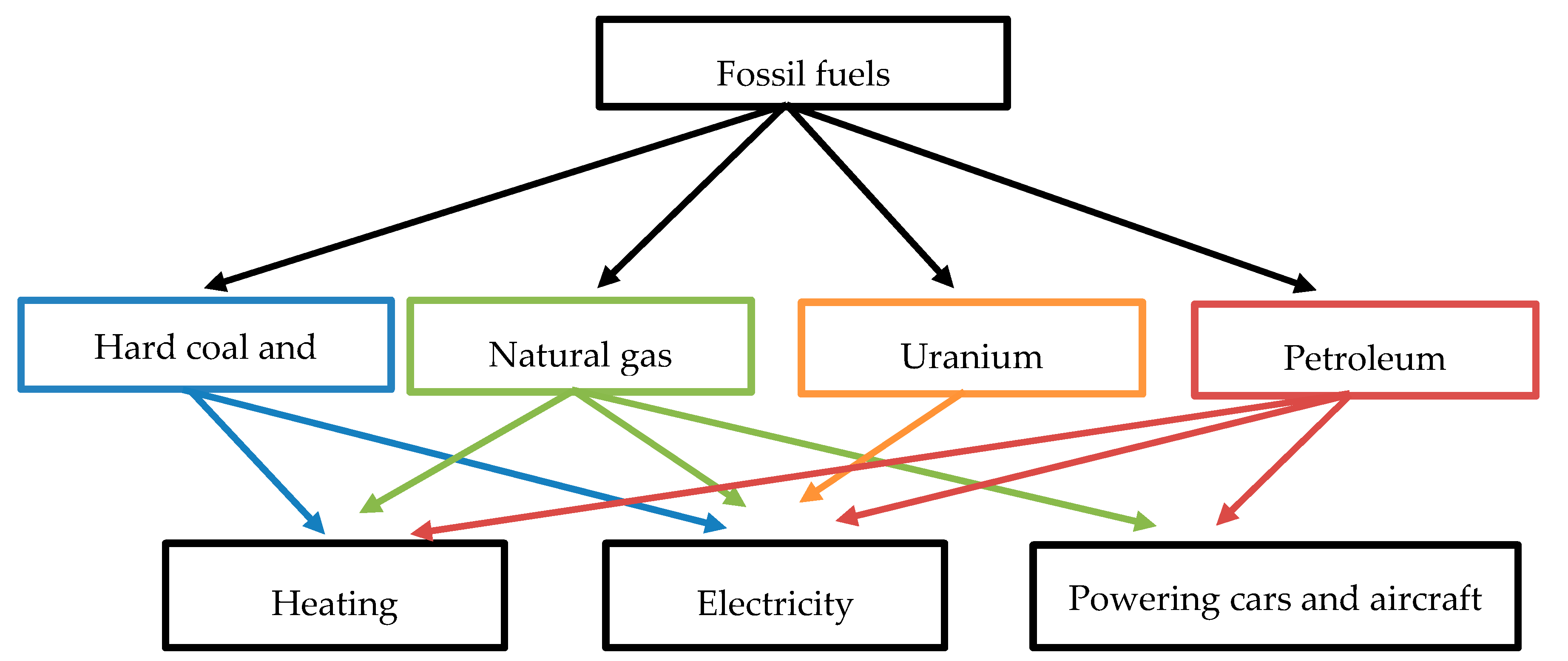

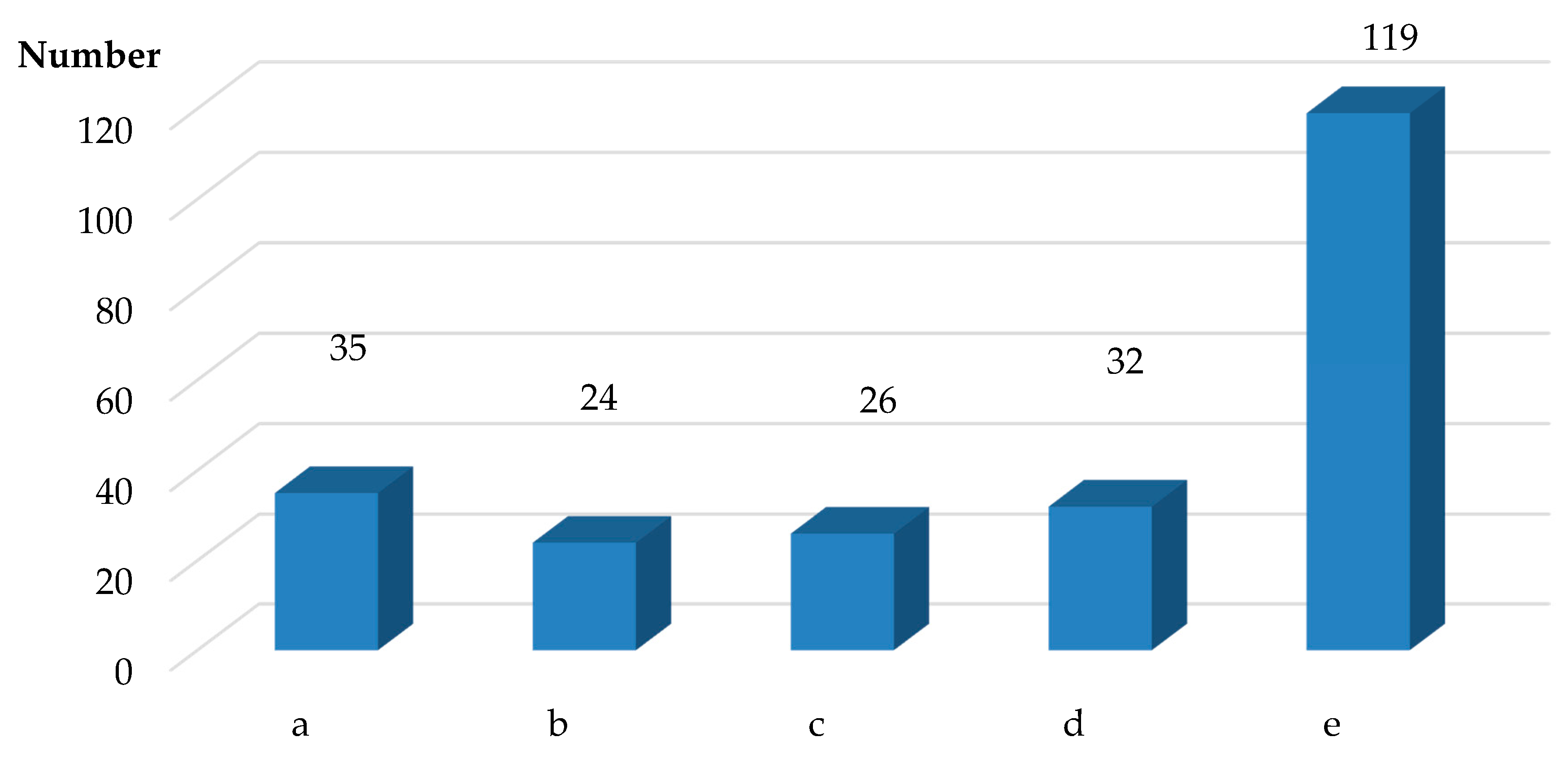
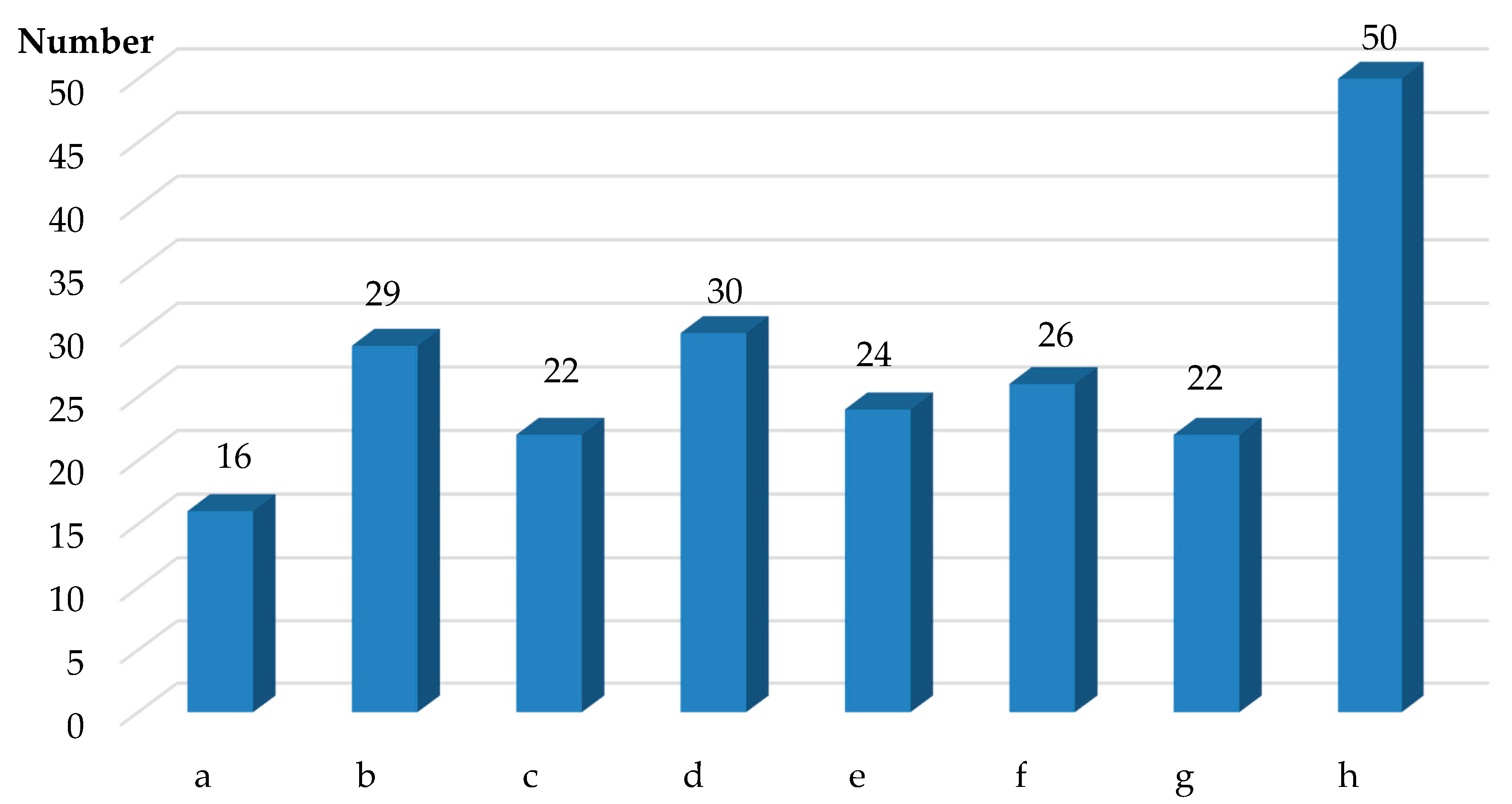
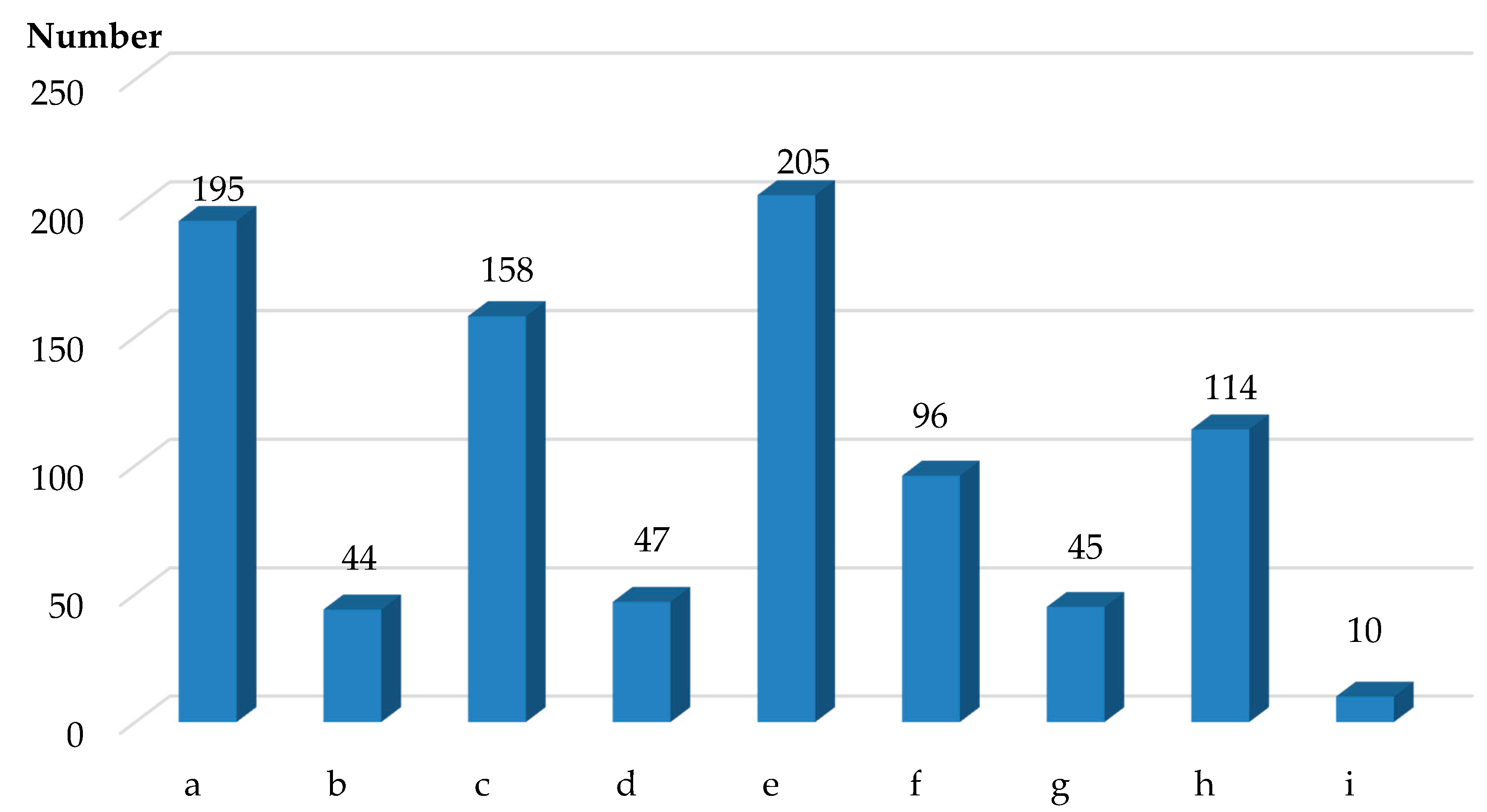
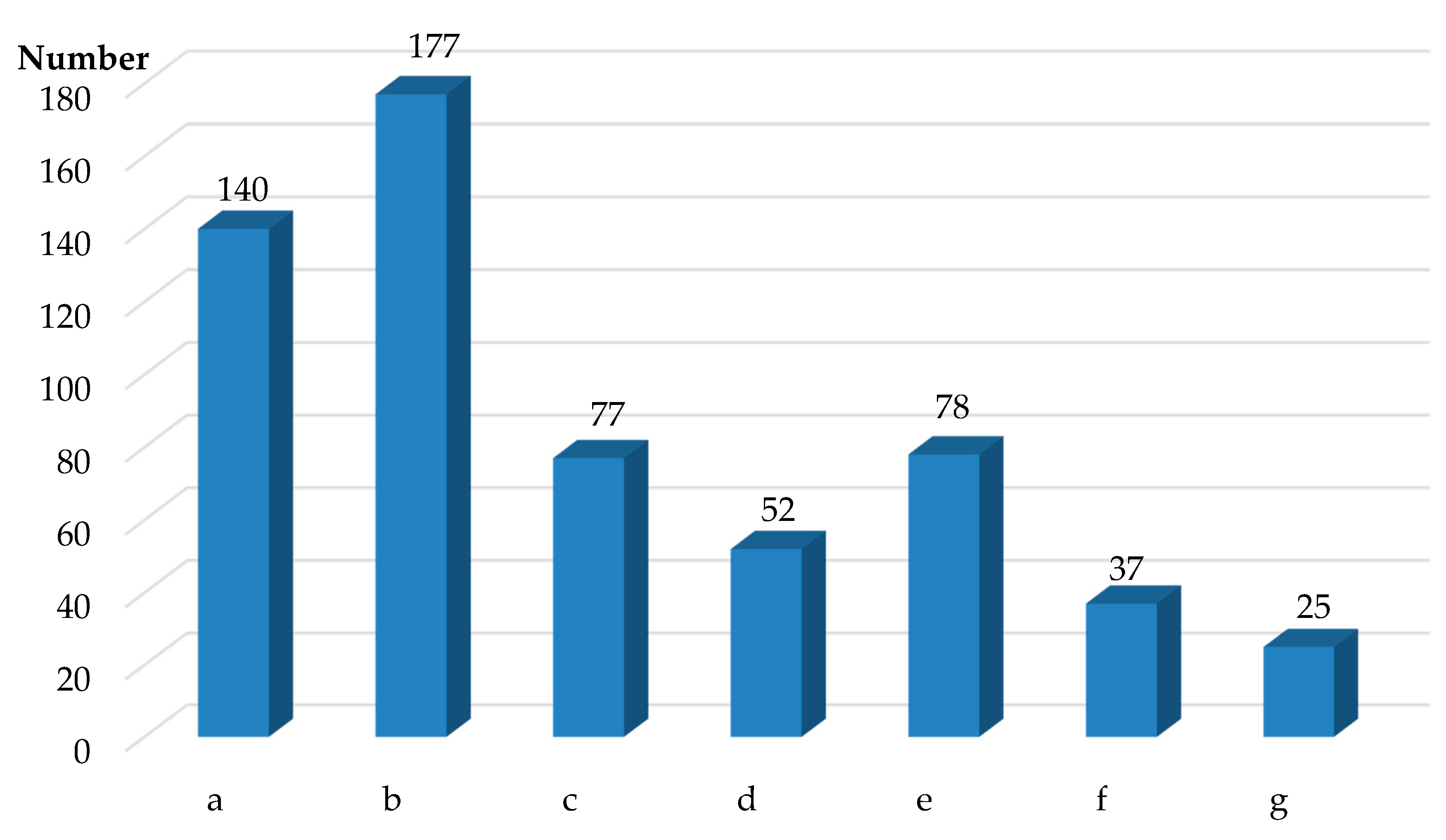
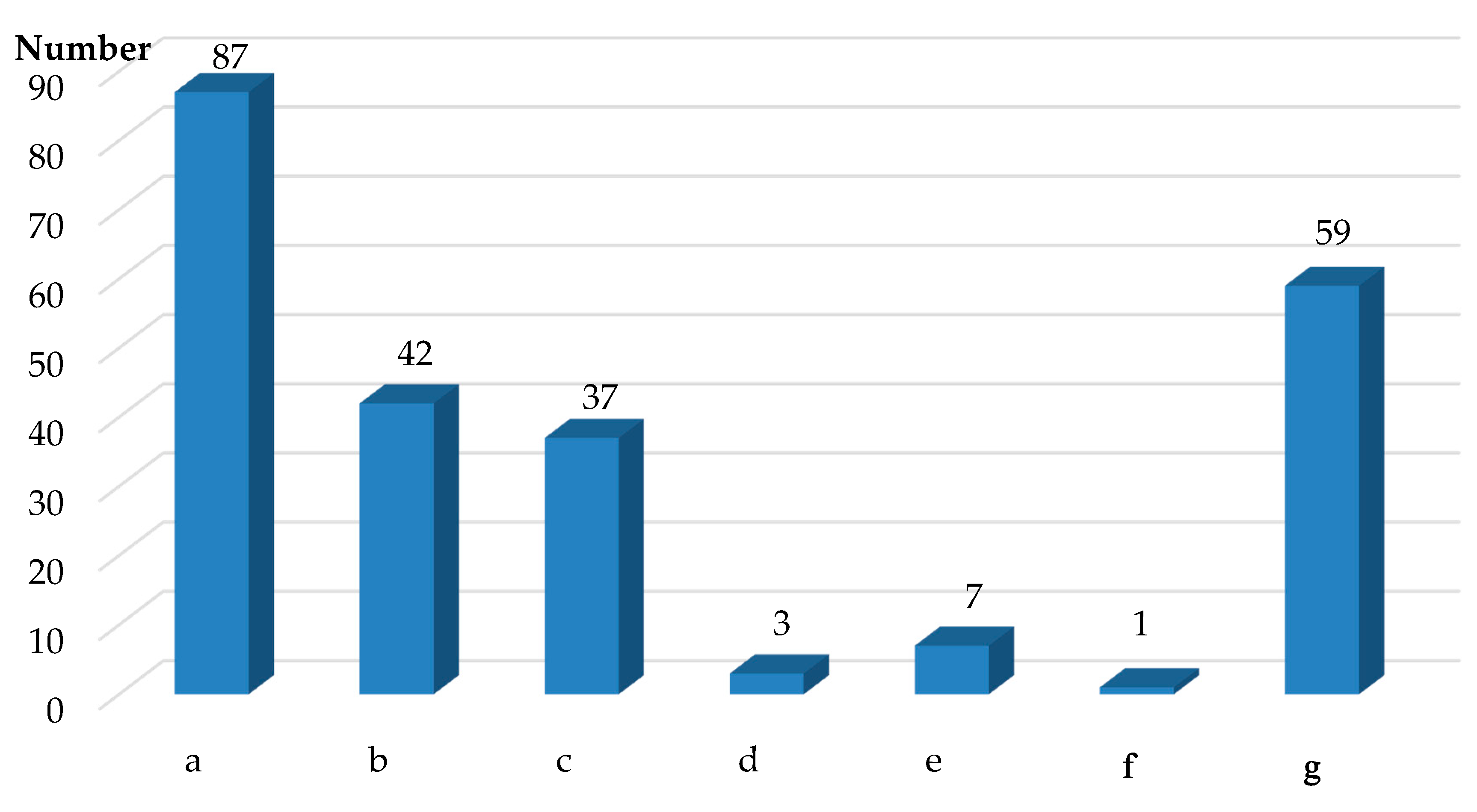
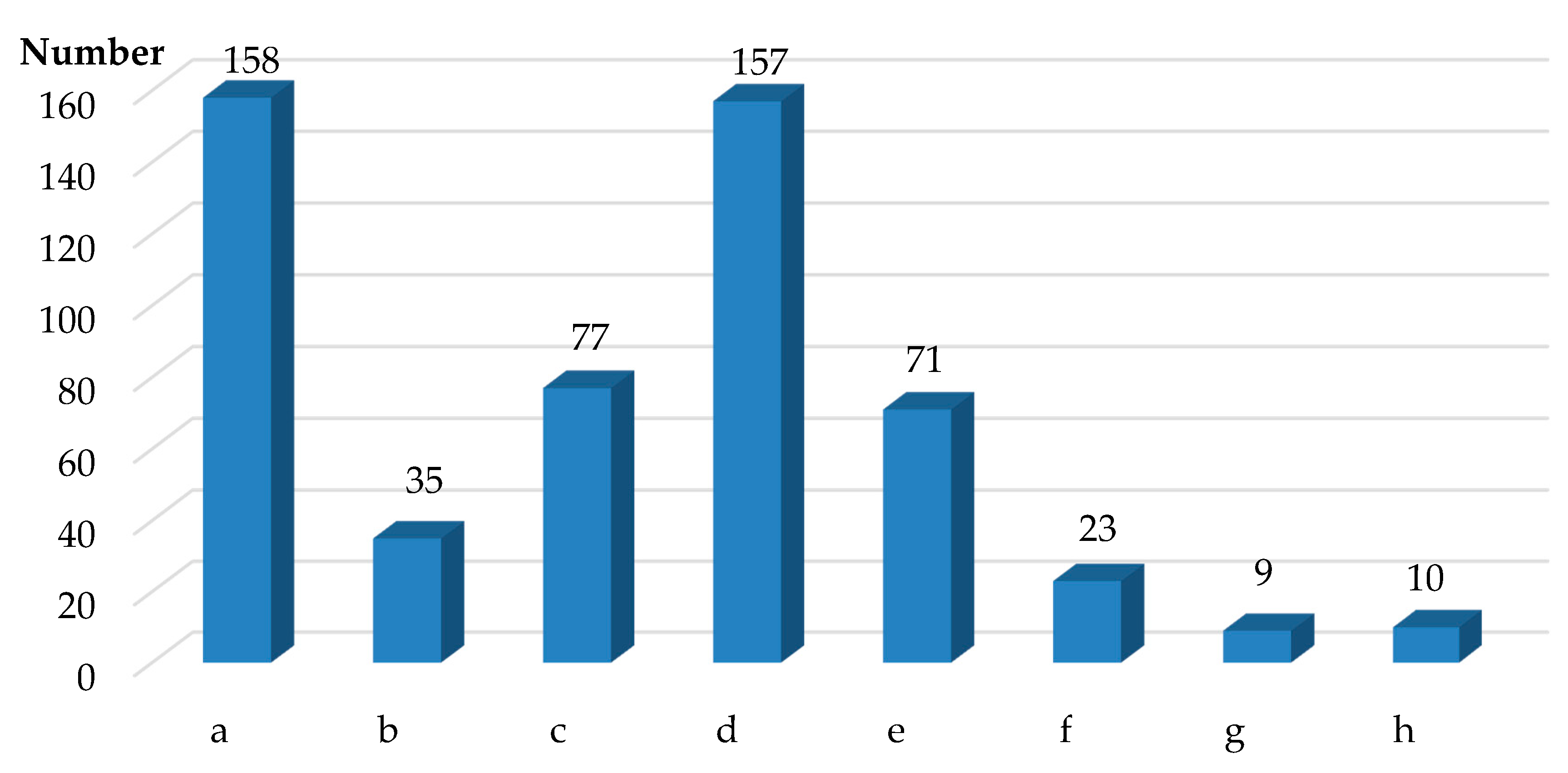
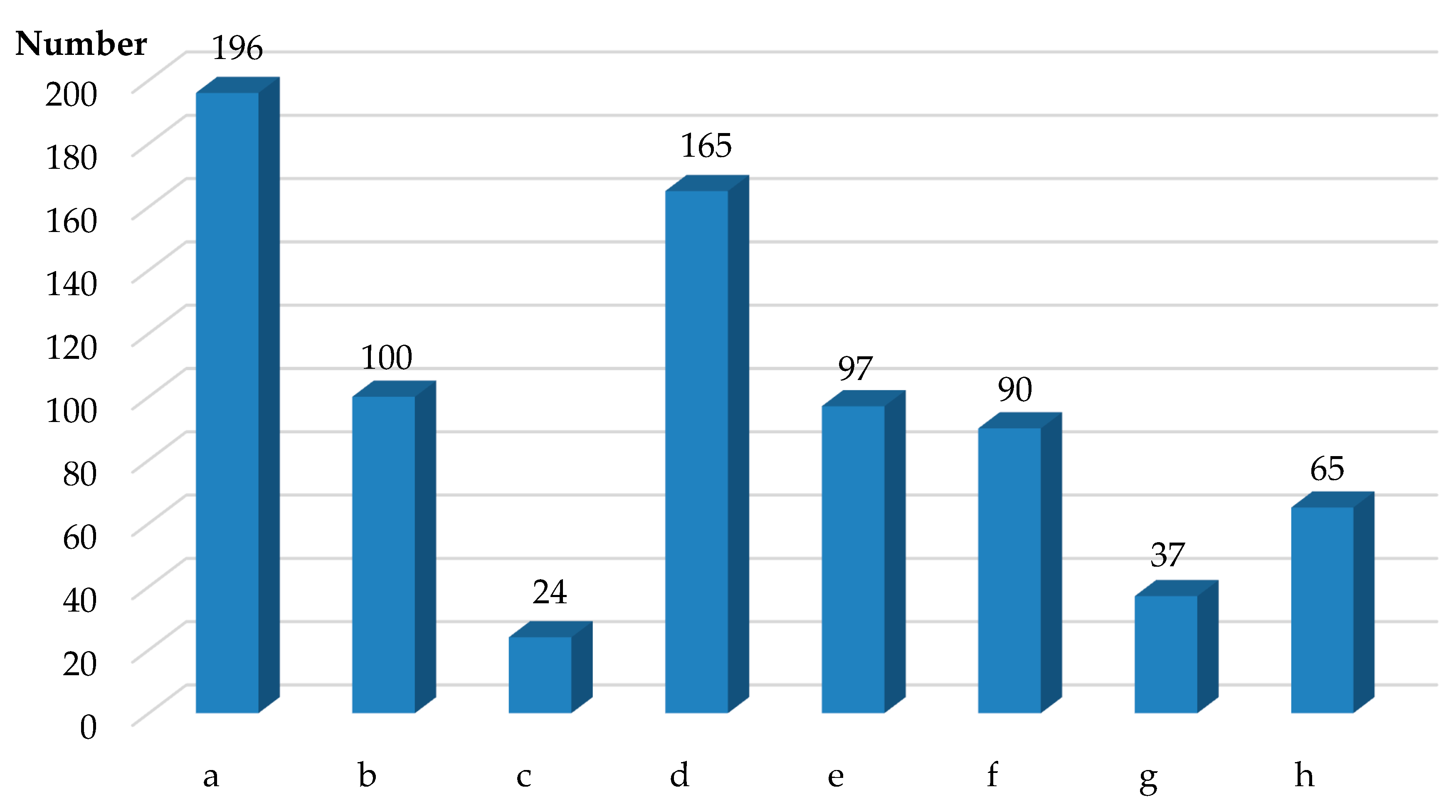
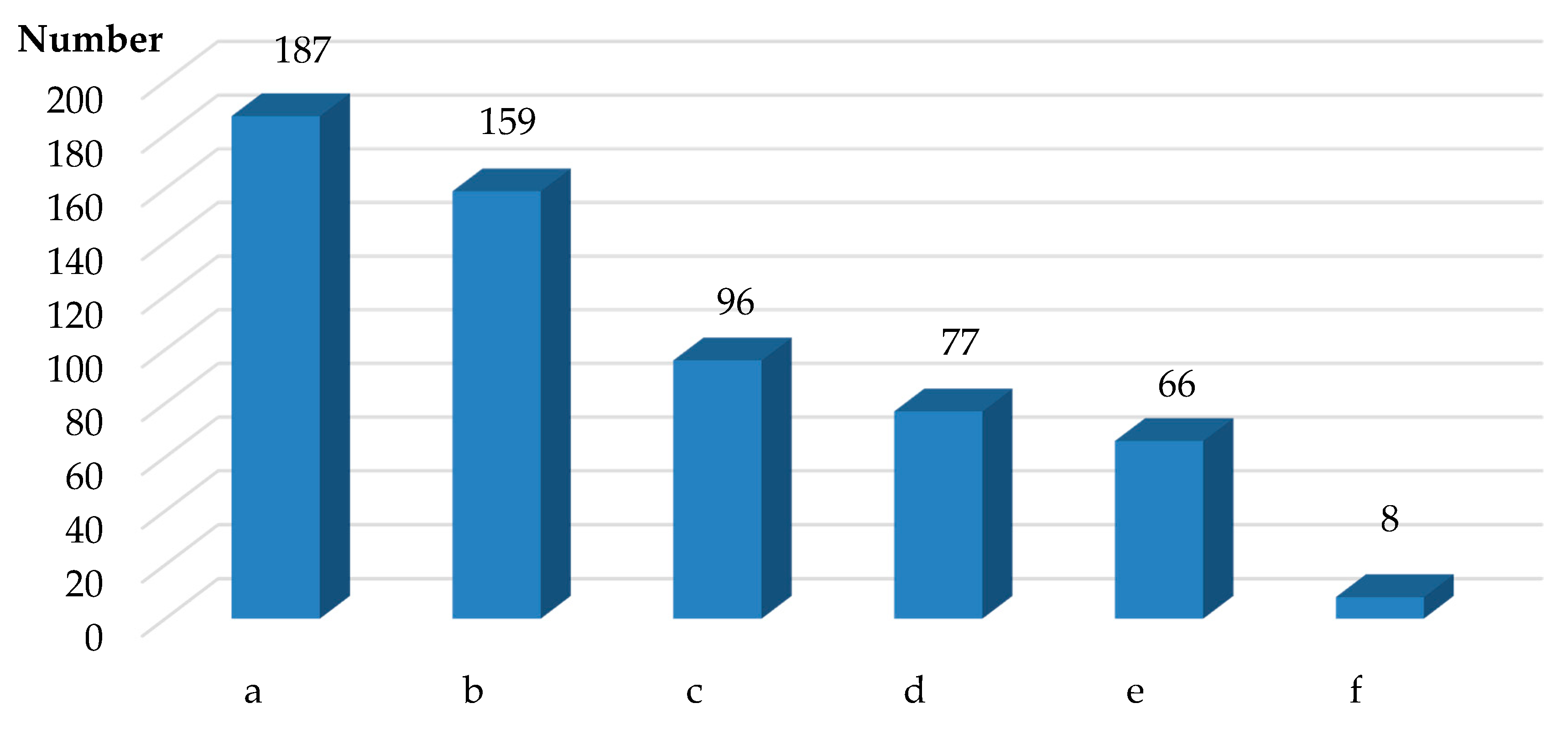
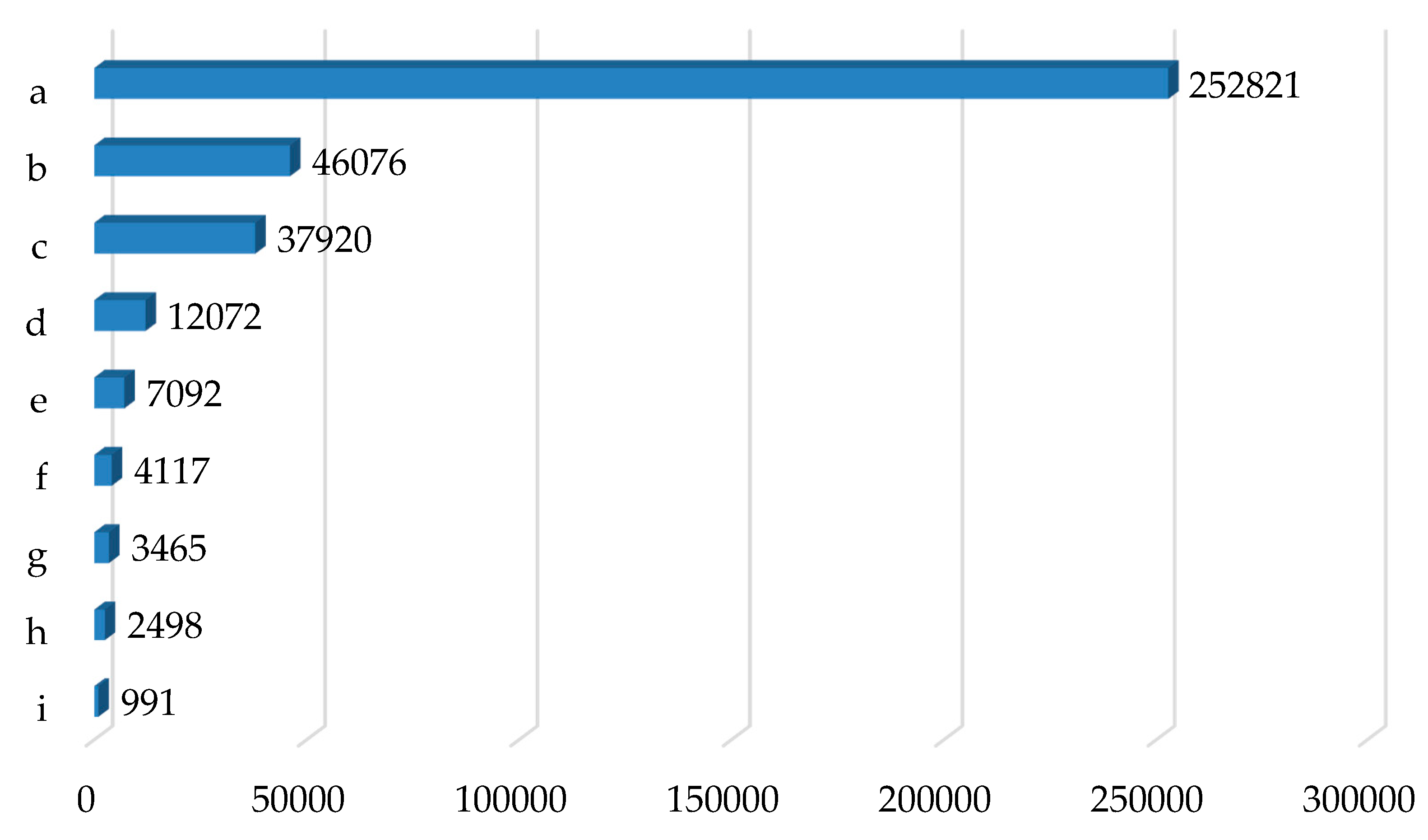
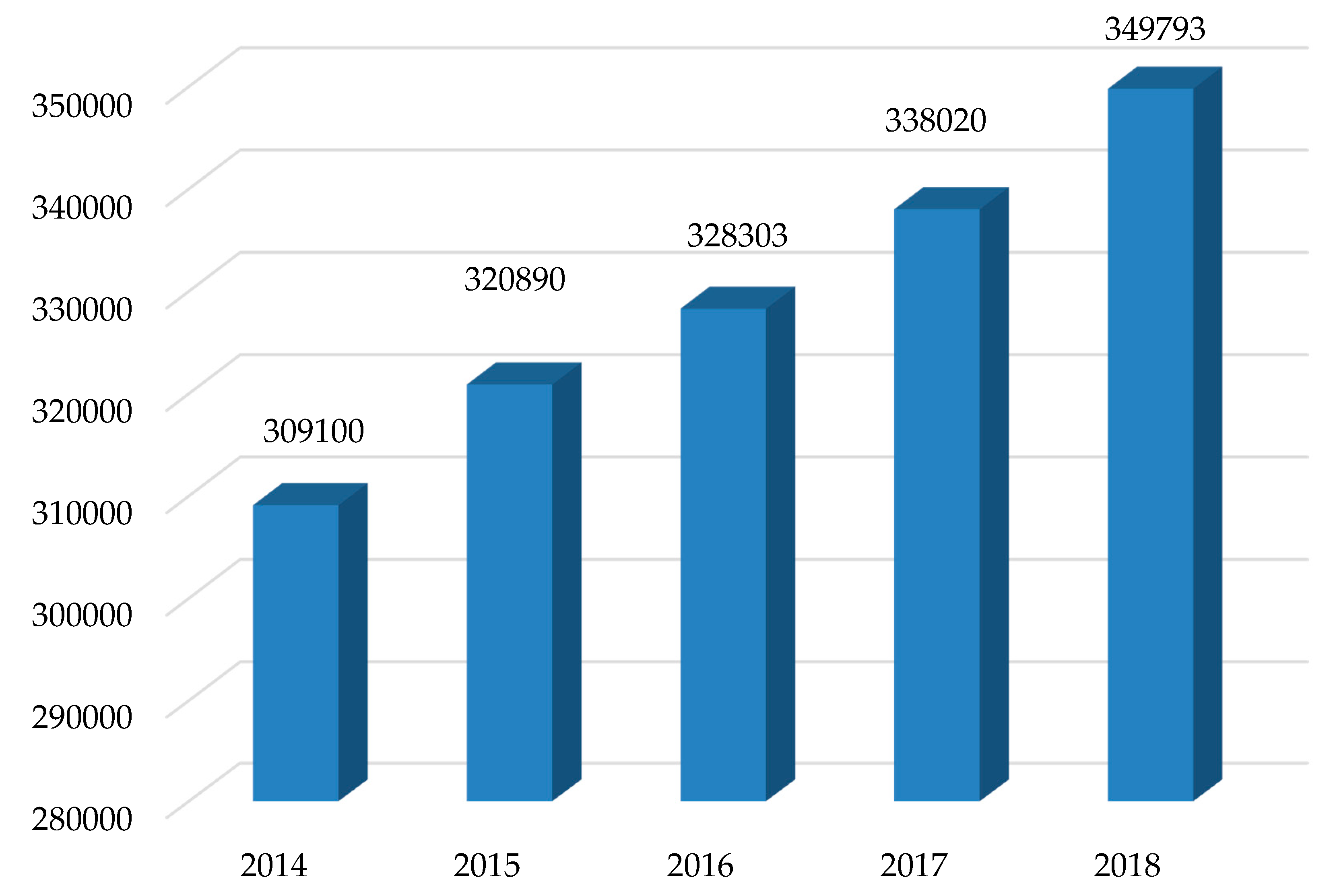
| Primary Sources of Energy | Natural Energy Transformations | Technical Energy Transformations | Form of Generated Energy | |
|---|---|---|---|---|
| Sun | water | evaporation, melting of ice and snow, precipitation | water power plants | electricity |
| wind | atmospheric currents | wind farms | thermal energy and electricity | |
| energy of waves | wave power plants | electricity | ||
| solar radiation | ocean currents | ocean current energy plants | electricity | |
| heating atmosphere and Earth’s surface | ocean thermal energy plants | electricity | ||
| heat pumps | thermal energy | |||
| solar radiation | collectors and thermal solar plants | thermal energy | ||
| PV cells and solar power plants | electricity | |||
| photolysis | fuels | |||
| biomass | biomass production | heating and thermal power plants | thermal energy and electricity | |
| conversion devices | fuels | |||
| Earth | radioactive decay | geothermal sources | heating and geothermal power plants | thermal energy and electricity |
| Moon | gravity | tidal moves | tidal power plants | electricity |
| Countries | 2013 | 2014 | 2015 | 2016 | 2013 | 2014 | 2015 | 2016 |
|---|---|---|---|---|---|---|---|---|
| Generation of Primary Power | ||||||||
| Total (Mtoe) | from Renewable Sources (Mtoe) | |||||||
| Poland | 70.6 | 66.9 | 67.6 | 66.4 | 8.5 | 8.1 | 8.8 | 9.0 |
| EU-28 | 792.1 | 774 | 767.4 | 755.4 | 195 | 197.9 | 205.8 | 210.7 |
| Specification | 2013 | 2014 | 2015 | 2016 | 2017 |
|---|---|---|---|---|---|
| (TJ) | |||||
| Total generation of primary energy | 3,006,461 | 2,853,825 | 2,869,751 | 2,804,263 | 2,722,815 |
| Generation of primary energy from renewable sources | 358,343 | 339,835 | 372,050 | 380,134 | 383,168 |
| (%) | |||||
| Share of renewable energy in the total generation | 11.9 | 11.9 | 13 | 13.6 | 14.1 |
| Source | 2013 | 2014 | 2015 | 2016 | |
|---|---|---|---|---|---|
| Solid biofuels | Poland | 80.2 | 76.6 | 74.6 | 71.1 |
| EU-28 | 46.3 | 44.1 | 44.6 | 77.7 | |
| Solar power | Poland | 0.3 | 0.4 | 0.6 | 0.7 |
| EU-28 | 5.5 | 6.1 | 6.3 | 6.3 | |
| Hydro-energy | Poland | 2.5 | 2.3 | 1.8 | 2.0 |
| EU-28 | 16.4 | 16.3 | 14.3 | 14.3 | |
| Wind energy | Poland | 6.1 | 8.2 | 10.6 | 12.0 |
| EU-28 | 10.4 | 11.0 | 12.6 | 12.4 | |
| Biogas | Poland | 2.1 | 2.6 | 2.6 | 2.9 |
| EU-28 | 7.2 | 7.6 | 7.7 | 7.9 | |
| Liquid biofuels | Poland | 8.2 | 9.2 | 9.2 | 10.2 |
| EU-28 | 6.5 | 7.1 | 6.6 | 6.5 | |
| Geothermal energy | Poland | 0.2 | 0.3 | 0.2 | 0.2 |
| EU-28 | 3.0 | 3.1 | 3.1 | 3.2 | |
| Biodegradable communal waste | Poland | 0.4 | 0.5 | 0.5 | 0.9 |
| EU-28 | 4.6 | 4.7 | 4.7 | 4.7 | |
© 2020 by the authors. Licensee MDPI, Basel, Switzerland. This article is an open access article distributed under the terms and conditions of the Creative Commons Attribution (CC BY) license (http://creativecommons.org/licenses/by/4.0/).
Share and Cite
Marks-Bielska, R.; Bielski, S.; Pik, K.; Kurowska, K. The Importance of Renewable Energy Sources in Poland’s Energy Mix. Energies 2020, 13, 4624. https://doi.org/10.3390/en13184624
Marks-Bielska R, Bielski S, Pik K, Kurowska K. The Importance of Renewable Energy Sources in Poland’s Energy Mix. Energies. 2020; 13(18):4624. https://doi.org/10.3390/en13184624
Chicago/Turabian StyleMarks-Bielska, Renata, Stanisław Bielski, Katarzyna Pik, and Krystyna Kurowska. 2020. "The Importance of Renewable Energy Sources in Poland’s Energy Mix" Energies 13, no. 18: 4624. https://doi.org/10.3390/en13184624





